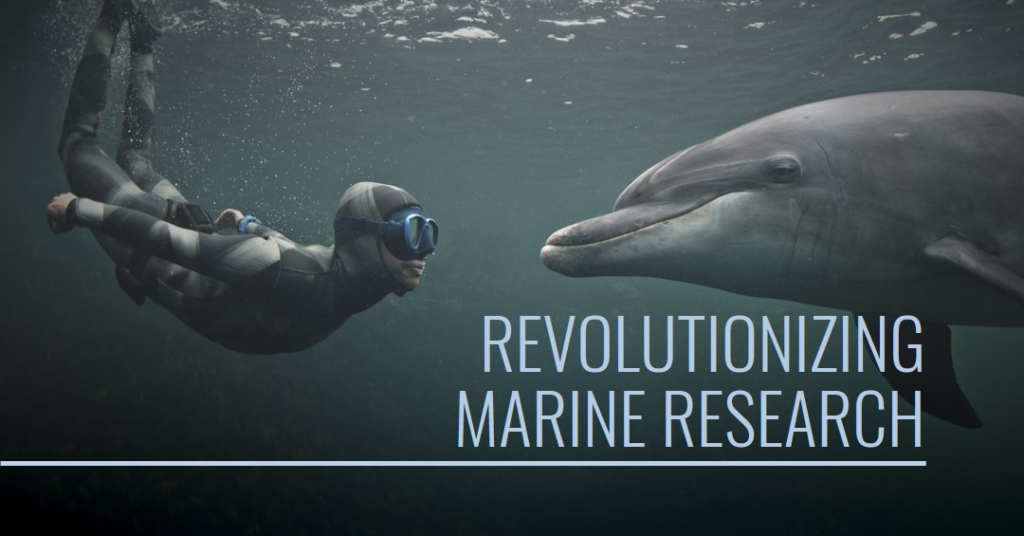Marine research is vital to understanding and preserving aquatic ecosystems. One of the most significant technological tools aiding this research is the Passive Integrated Transponder (PIT) tag reader. These devices, used for tracking and identifying aquatic species, have been around for decades. However, 2024 has seen remarkable innovations in PIT tag reader technology, making them more reliable, efficient, and accurate for marine research than ever before.
This article explores the latest advancements in PIT tags readers and how they are transforming the way researchers study marine life. We’ll dive into improved durability, enhanced data transmission, increased precision, and innovative software that have made PIT tag reader indispensable for today’s marine research.
1. Durability and Water-Resistance Improvements
One of the biggest challenges with PIT tags readers has always been the harsh marine environment. Saltwater, extreme pressures, and fluctuating temperatures can degrade electronics and compromise the performance of PIT tags readers. In 2024, manufacturers have made groundbreaking improvements in the materials used for PIT tags readers, making them more resilient than ever before. These readers are now encased in high-grade, corrosion-resistant materials, which not only withstand long-term exposure to saltwater but also operate under extreme conditions, such as deep-sea research or polar marine environments.
New innovations in water-resistant coatings and sealing techniques have further improved the reliability of PIT tags readers. Enhanced O-rings and double-sealed enclosures prevent water from infiltrating sensitive electronics, ensuring that the devices remain functional even after prolonged submersion.
2. Enhanced Data Transmission Technology
Data accuracy and transmission speed have always been areas where PIT tag reader have room for improvement. In 2024, advancements in signal processing and wireless communication have brought significant improvements to these aspects.
Modern PIT tags readers can now transmit data over greater distances with minimal interference. The integration of advanced antenna technology allows for more precise readings, even in turbulent or murky waters. Researchers no longer need to be in close proximity to the tagged animal to capture accurate data. This improvement reduces the potential for human error and increases the overall efficiency of data collection.
Moreover, PIT tags readers are now equipped with real-time data transmission capabilities. Rather than storing data for later retrieval, these devices can now transmit information directly to cloud-based systems, allowing researchers to monitor tagged species remotely and in real time. This innovation not only saves time but also enables quicker responses to emerging marine environmental threats.
3. Improved Battery Life and Power Efficiency
Another critical advancement in PIT tags readers for 2024 is improved battery life and power efficiency. Earlier models required frequent recharging or battery replacements, which disrupted long-term studies. Thanks to innovations in energy-efficient technology and battery capacity, modern PIT tags readers can last for extended periods without requiring intervention.
This improved power efficiency is especially valuable for long-term marine research projects where continuous monitoring is essential. Some of the latest models are now equipped with solar-powered options, allowing them to recharge in daylight when used in shallow waters, further extending their operational time.
4. Integration with AI and Machine Learning
A breakthrough innovation in 2024 is the integration of Artificial Intelligence (AI) and Machine Learning (ML) into PIT tags reader technology. These advancements allow researchers to analyze massive amounts of data more efficiently. AI algorithms can now predict migratory patterns, detect anomalies in animal behavior, and provide insights into environmental factors affecting tagged species.
For example, machine learning algorithms can recognize and categorize specific behaviors in marine animals by analyzing the signals from PIT tags. These tools enhance the reliability of PIT tags readers by automating data analysis, reducing human error, and providing insights that were previously difficult to extract from raw data.
5. Voda IQ’s Contribution to Innovation
One company at the forefront of PIT tag reader advancements is Voda IQ. In 2024, Voda IQ has introduced a new line of PIT tag reader that incorporates all of the above innovations, pushing the boundaries of what these devices can achieve in marine research. Their readers are equipped with the latest signal processing technologies, ensuring that data is collected accurately even in the most challenging environments.
Voda IQ’s commitment to sustainability is also evident in their energy-efficient designs, allowing researchers to track marine species over extended periods without the need for frequent battery changes. The introduction of AI-driven data analysis by Voda IQ has also revolutionized how researchers interpret data, making their devices a top choice for marine researchers globally.
6. New Software Capabilities for Data Management
Managing the massive datasets generated by PIT tags readers has historically been a challenge. However, innovations in 2024 have transformed how data is collected, stored, and analyzed. The latest PIT tags readers come equipped with software platforms that are cloud-integrated, allowing for seamless data transfer from the field to the lab.
These platforms use AI to filter and organize data automatically, enabling researchers to focus on analysis rather than data management. The software also provides customizable dashboards, allowing researchers to monitor specific metrics, such as animal movement patterns or environmental conditions, in real-time.
Moreover, these advancements have opened the door to greater collaboration among researchers across the globe. Data collected by PIT tags readers can now be shared instantly, enabling marine scientists to work together on international projects and respond more quickly to environmental changes.
7. Cost-Effectiveness and Scalability
In addition to technical advancements, 2024 has seen a drop in the cost of PIT tags readers, making them more accessible to a wider range of marine researchers. New production methods have reduced manufacturing costs without compromising on quality. These cost-effective solutions allow smaller research teams and organizations to leverage high-end technology, making PIT tags readers more scalable for large-scale research projects.
As a result, more marine ecosystems are being studied using these technologies, providing researchers with a wealth of data to protect endangered species, study migration patterns, and understand the impacts of climate change on aquatic life.
Conclusion
The innovations in PIT tags reader technology in 2024 have revolutionized marine research. From enhanced durability and water-resistance to AI-powered data analysis and cloud-based software management, these advancements have made PIT tag reader more reliable and effective than ever before. Companies continue to push the envelope, providing cutting-edge solutions that improve how marine ecosystems are studied and preserved.
With PIT tags readers becoming more cost-effective and scalable, it’s exciting to see how these innovations will continue to shape the future of marine research. Will the next leap in technology allow us to understand the ocean’s mysteries even better?
FAQs
- What are PIT tag reader used for in marine research?
PIT tag reader are used to track and monitor individual animals in marine ecosystems. They provide data on migration patterns, behavior, and population dynamics. - How have PIT tags readers improved in 2024?
In 2024, PIT tags readers have become more durable, power-efficient, and capable of transmitting data in real-time. They also integrate with AI and machine learning to enhance data analysis. - Can PIT tags readers be used in deep-sea environments?
Yes, innovations in material durability and water-resistant coatings now allow PIT tags readers to function effectively in extreme environments, including deep-sea conditions. - How do AI and machine learning improve PIT tag reader?
AI and machine learning help automate the analysis of data collected by PIT tag reader, reducing errors and providing deeper insights into animal behaviors and environmental factors.
Would you like to explore more about how these advancements can benefit your marine research efforts?
Also know about



